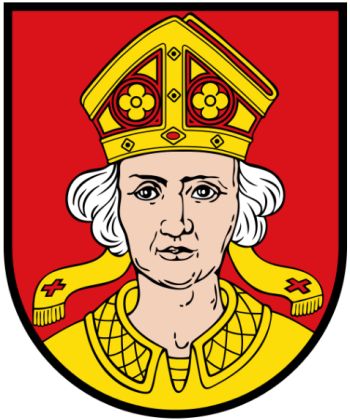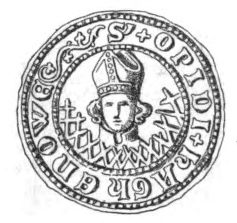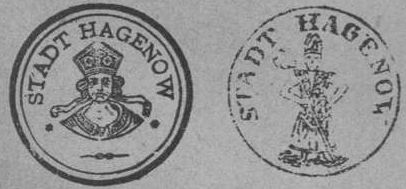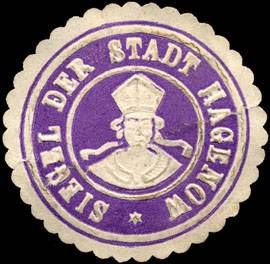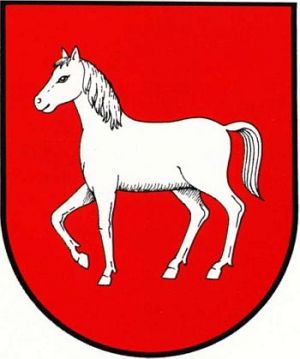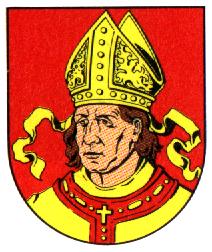Hagenow: Difference between revisions
Knorrepoes (talk | contribs) m (Text replacement - "{{media}}" to " {{de1}} {{media1}}") |
Knorrepoes (talk | contribs) m (Text replacement - "{{de}}" to "") |
||
| Line 1: | Line 1: | ||
<seo title="Wappen von Hagenow" titlemode="append"></seo> | |||
'''HAGENOW''' | '''HAGENOW''' | ||
Revision as of 17:00, 26 December 2022
HAGENOW
State : Mecklenburg-Vorpommern
District (Kreis) : Ludwigslust-Parchim (until 2011 Ludwigslust)
| German | In Rot das Brustbild eines hersehenden Bischofs mit natürlicher Gesichtsfarbe, silbernem Haar, rot verzierter goldener Bischofsmütze und goldenem Gewand. |
| English | No blazon/translation known. Please click here to send your (heraldic !) blazon or translation |
Origin/meaning
The arms were officially granted on April 10, 1858.
Hagenow was first mentioned in a document from round 1190, and was first mentioned as a city in a charter from 1420. In 1370 it was still mentioned as village. However, as a city it was still subject to Schwerin, only in 1754 it became an independent city.
The oldest known seal is known from a charter from 1420 and already shows the bust of a bishop, see below. The seal states S(igillum) Op(p)idi Haghenowe, indicating an older origin (oppidum=village/town). The bust most likely represents Saint Denis of Paris, the patron saint of the local church at the time. The bust is behind a fence, which can be explained in two ways; the name Hagenow is derived from Hage, meaning a fence, or it refers to the fact that the village was protected by fences rather than walls at the time.
The composition of the seal was officially adopted as arms in 1858, but was used already earlier by the town. The saint was officially described as a bishop, not as Saint Denis. The colours were chosen arbitrarily in 1858. The actual design of the head has changed during the years based on the preference of the artist.
On September 2, 1940 the city received different arms, a silver horse on a red shield. The meaning of the horse is not known.
These arms were used only until 1945 when the historical arms were restored. Uncharacteristically, the arms with the saint were continued during the DDR (saints were not seen as appropriate symbols at the time) and officially redesigned in 1996.
| Seal from 1420 |
The municipal stamp shown in 1892 |
| Seal from around 1900 |
Local emergency money with the arms from 1920 |
| The arms by Hupp in the Kaffee Hag albums +/- 1925 |
The arms from 1940-1945 |
| The arms during DDR times |
Literature: Bensing et al., 1984; Schütt, 2002
